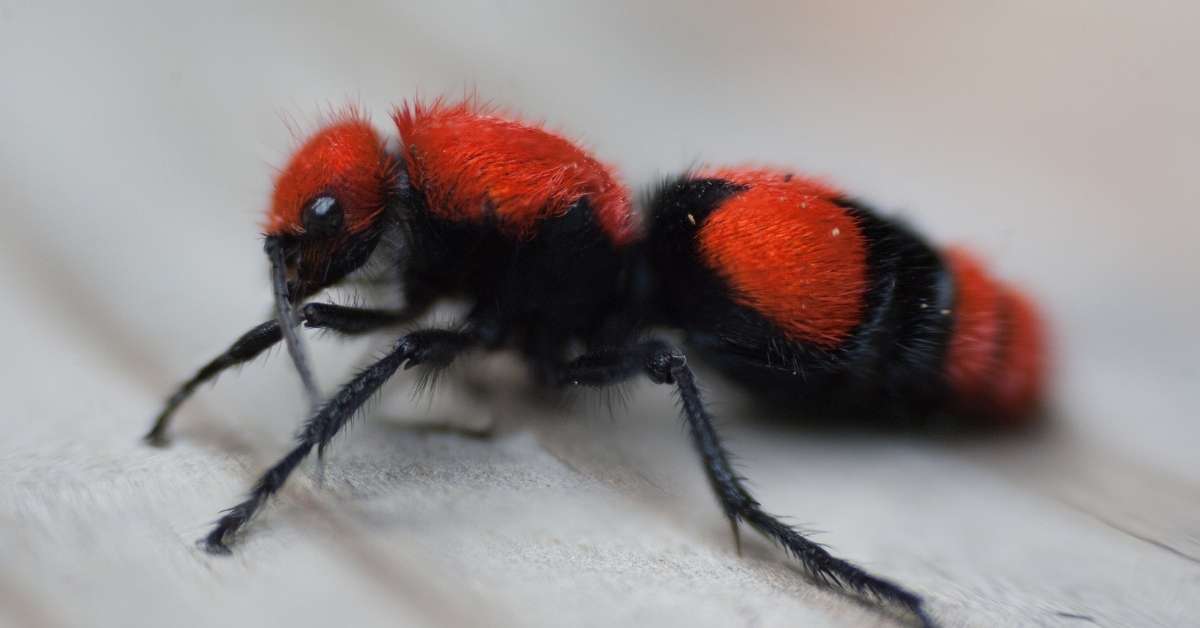Velvet ants are known for their velvety appearance, and their bodies are covered with fine short hair. These are actually wasps as their physical appearance relates to them.
Moreover, they have a strong defensive system in which only 1 to 2 of these insects die after 80 to 100 interactions with predators like toads and lizards.
Why Are Velvet Ants Called Cow Killers? Velvet ants are called cow killers as they can kill a large animal with tough skin like a cow by penetrating deeply into the skin with stingers. Moreover, only female velvet ants can do this as they have a long stinger and are wingless, and the males lack an ovipositor or stinger. The stingers of 0.5 to 0.75-inch in length move inside the upper layer of skin and cause wounds.
These ants are known to inflict both humans and animals, but it is still doubtful about cows, so the name of cow killers is completely not relatable to these insects and is misleading.
What are velvet ants?
These ants are not commonly seen inside the house and are usually present in the yards, pastures, and open areas. You can see them crawling on the lawn vegetation and digging deep in the soil.
Moreover, they have a lot of short hair on their bodies and look like wasps as they have no clear and deep constriction in the region between the abdomen and thorax.
They do not have elbowed antennae, which are seen in ants. As a result, they have a lesser risk of attack from predators but are responsible for painful stings when someone tries to attack them.
In addition, they appear in red and black color, and females appear more reddish than black and are wingless.
They have six legs and are almost 4 to 22mm in size. These feed on nectar usually, but their larvae are ground parasites.
Why are velvet ants known as cow killers?
Probably, you have heard about the common name of velvet ants as cow killers; that is entirely misleading and has nothing close to reality.
This name was assigned to these insects due to their painful sting, as they can bite you severely. In addition, their sting is assumed to be so powerful that it can kill an animal like a cow.
As the name of cow killer suggests, it is expected to kill a large animal with tough skin like cows with only a single sting of these tiny creatures.
However, there is no actual proof, and it is still an assumption by the people who have got its sting in their lives as it is painful to tolerate the pain.
An almost 0.25 to 0.5-inch longer stinger in these insects can penetrate deep into the skin layer and is responsible for a potent sting.
So, it is supposed to be able to kill a cow due to its higher strength and a more extended stinger that can also work as an ovipositor and penetrate the upper layer of skin, causing swelling.
How to protect cows from velvet ants?
You can protect cows from velvet ants by spraying wasp killers on the lawn, providing space for these insects to grow.
Moreover, it is better to mow the grass frequently to avoid the excessive growth of leaf blades. Finally, regular pruning of the overgrown branches of leaves can help get rid of these ants.
You can also contact a pest management team if your garden has a large colony of these insects.
Use insecticidal sprays over the plants and all over the yard to kill these annoying nests and prevent their growth before it creates a problem for you.
Are all velvet ants known as cow killers?
The name of cow killers belongs only to the female gender as only females pose an ovipositor or stinger responsible for stinging.
This organ is absent in the male velvet ant that appears red and black. Moreover, only a female’s sting is responsible for the reputation of their whole community.
Moreover, these are wingless and move on the ground, while males have wings on their bodies that can fly and move to different locations.
The female insects crawl on the ground and pinch the skin cell by pulling them outward with a great force after reaching your body.
Are velvet ants poisonous?
Velvet ants are not poisonous as their venom is less toxic, creating a severe wound infection. However, they can sting deep in the skin like wasps, making even large animals feel helpless.
They are not aggressive as fire ants and sting rarely when you interfere in their mound. However, the chemicals get released in the body after stings and cause redness and swelling in a localized area.
Moreover, their venom is less toxic than a honeybee’s, but their sting is too painful for a human or animal to tolerate.
It is difficult to forget about the serious pain in the infected area, even if the ovipositor accidentally penetrates your skin.
Why are velvet ants so hard to kill?
It is challenging to kill velvet ants as they have developed multiple defense mechanisms that help fight against stress and predator attack.
They have a hard exoskeleton layer, making it difficult to crush these insects. In addition, they can sting the skin when you try to interfere in their colony.
In addition, aposematic coloration is warning coloration when the insects display different patterns in the color of their body that prevent predators from attacking them.
These are indestructible and make a buzzing sound followed by the release of chemicals from the gland in their mouth.
Furthermore, chemical alarm signals and stridulations are also the defensive reactions of these insects.
According to research on their strength, it is assumed that 10 to 11 times more pressure is required to squish these insects than a honey bee as their body is strong enough not to be crushed easily.
Related Articles:

